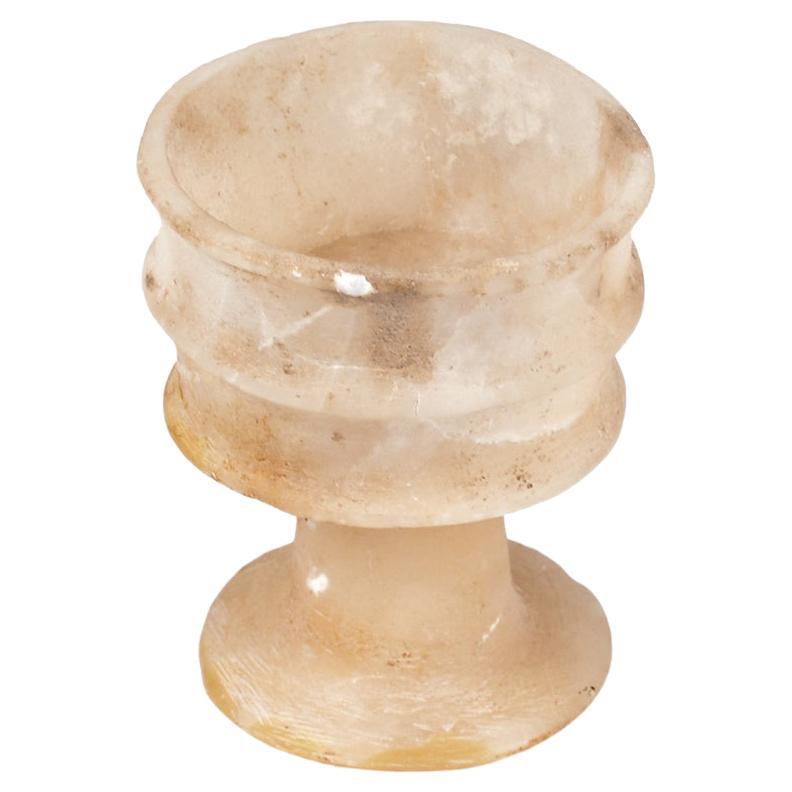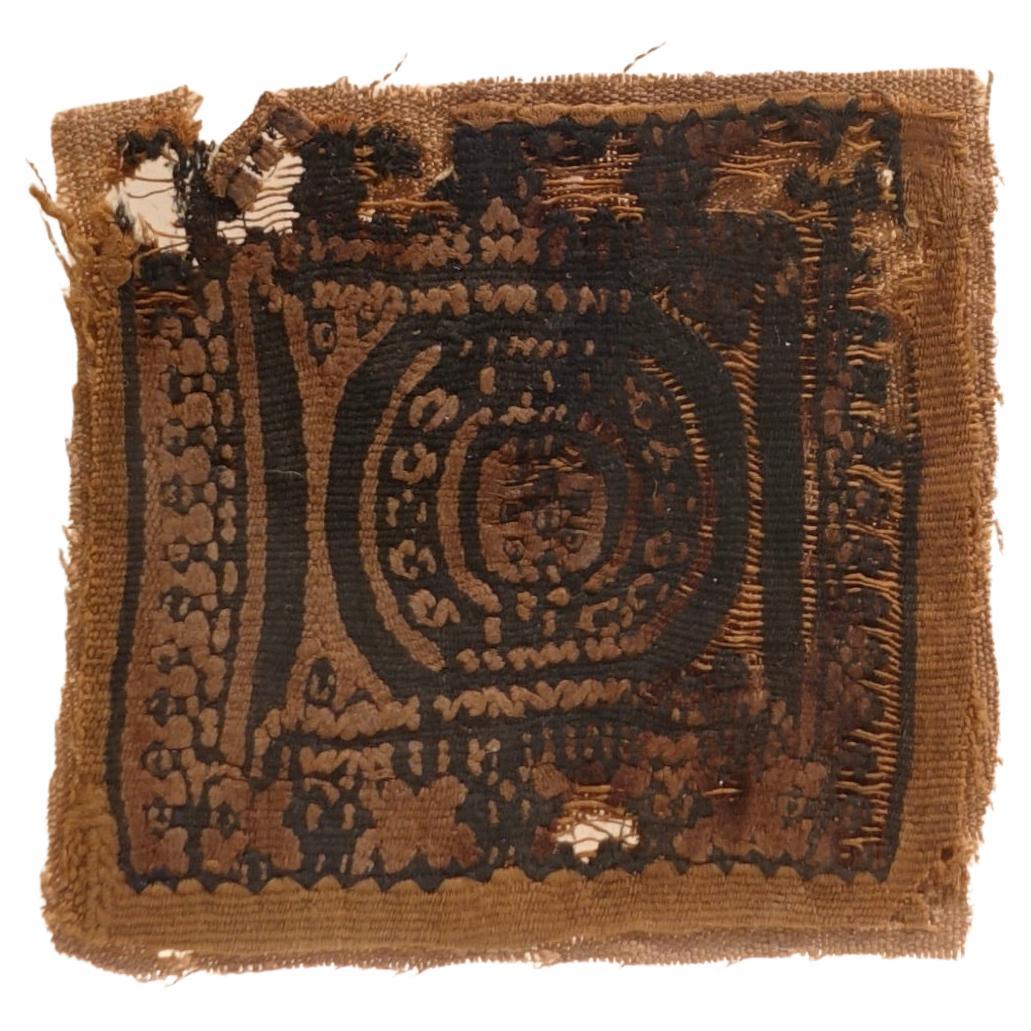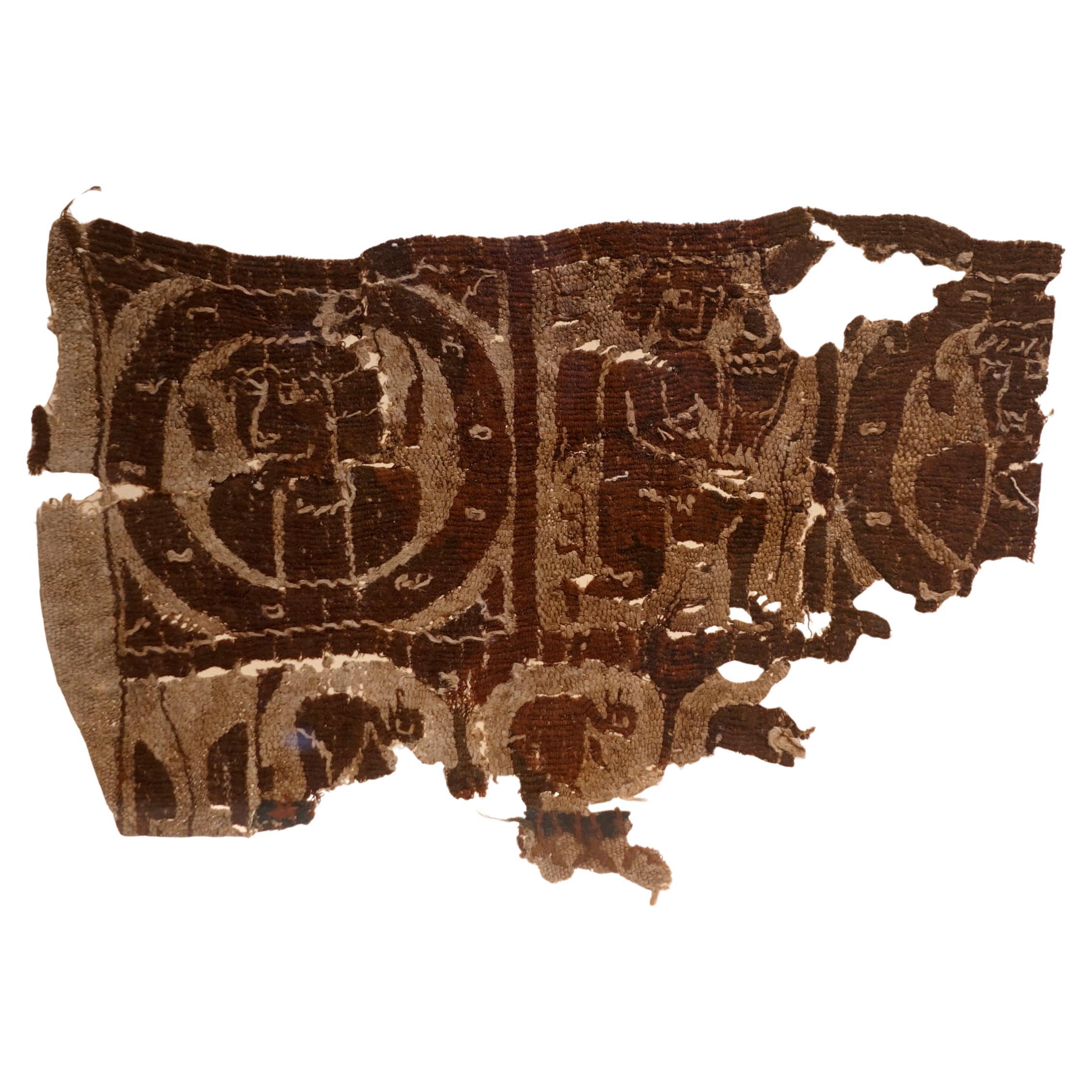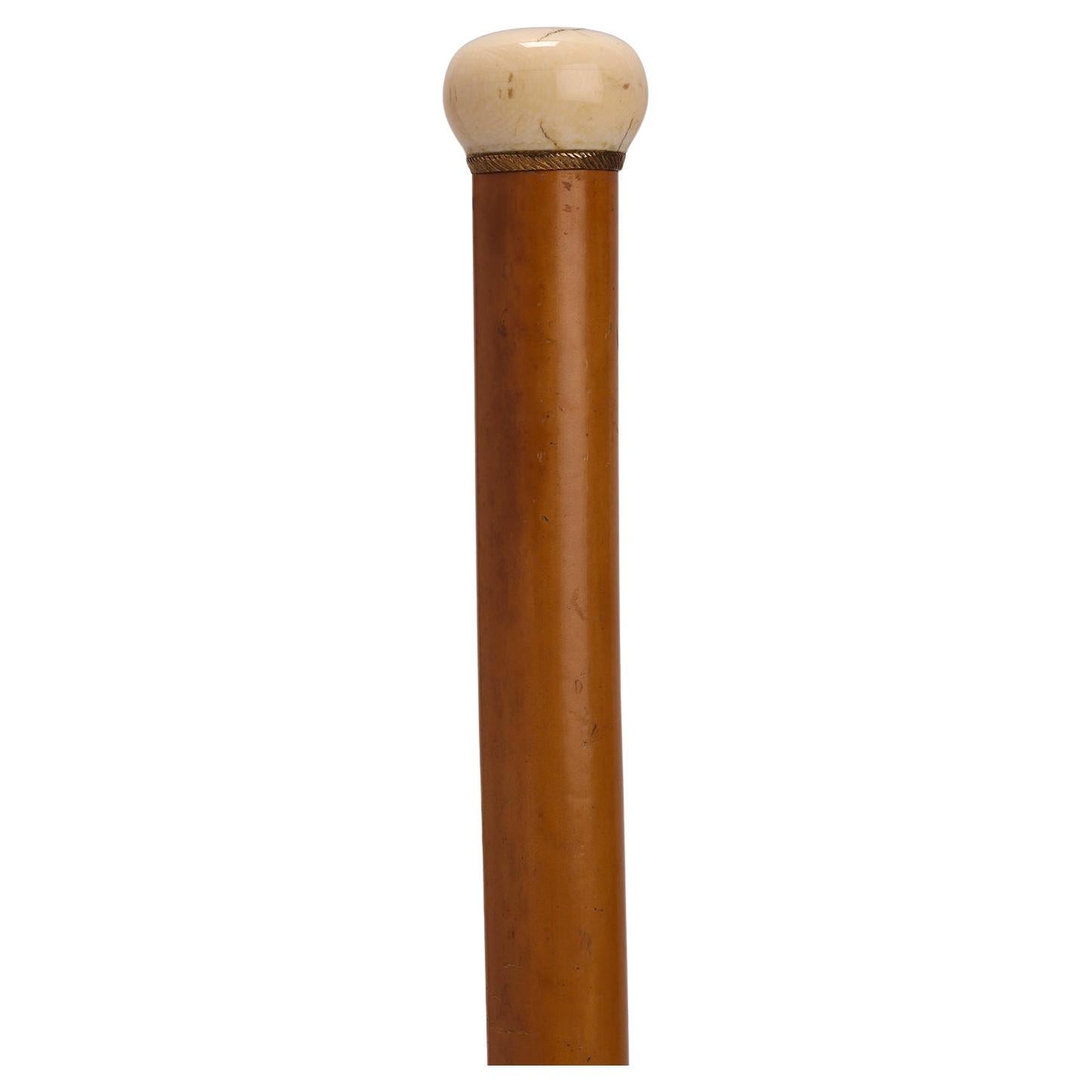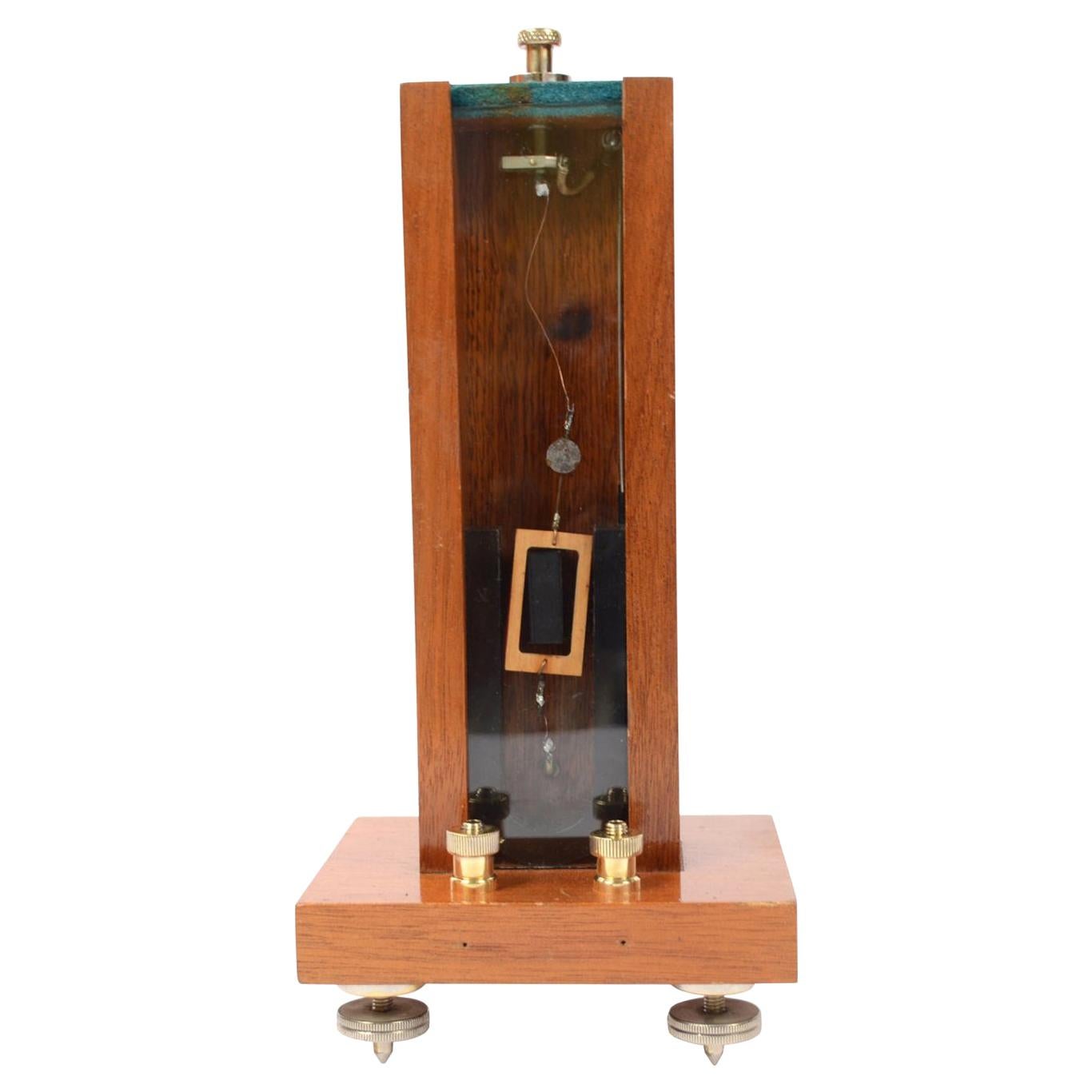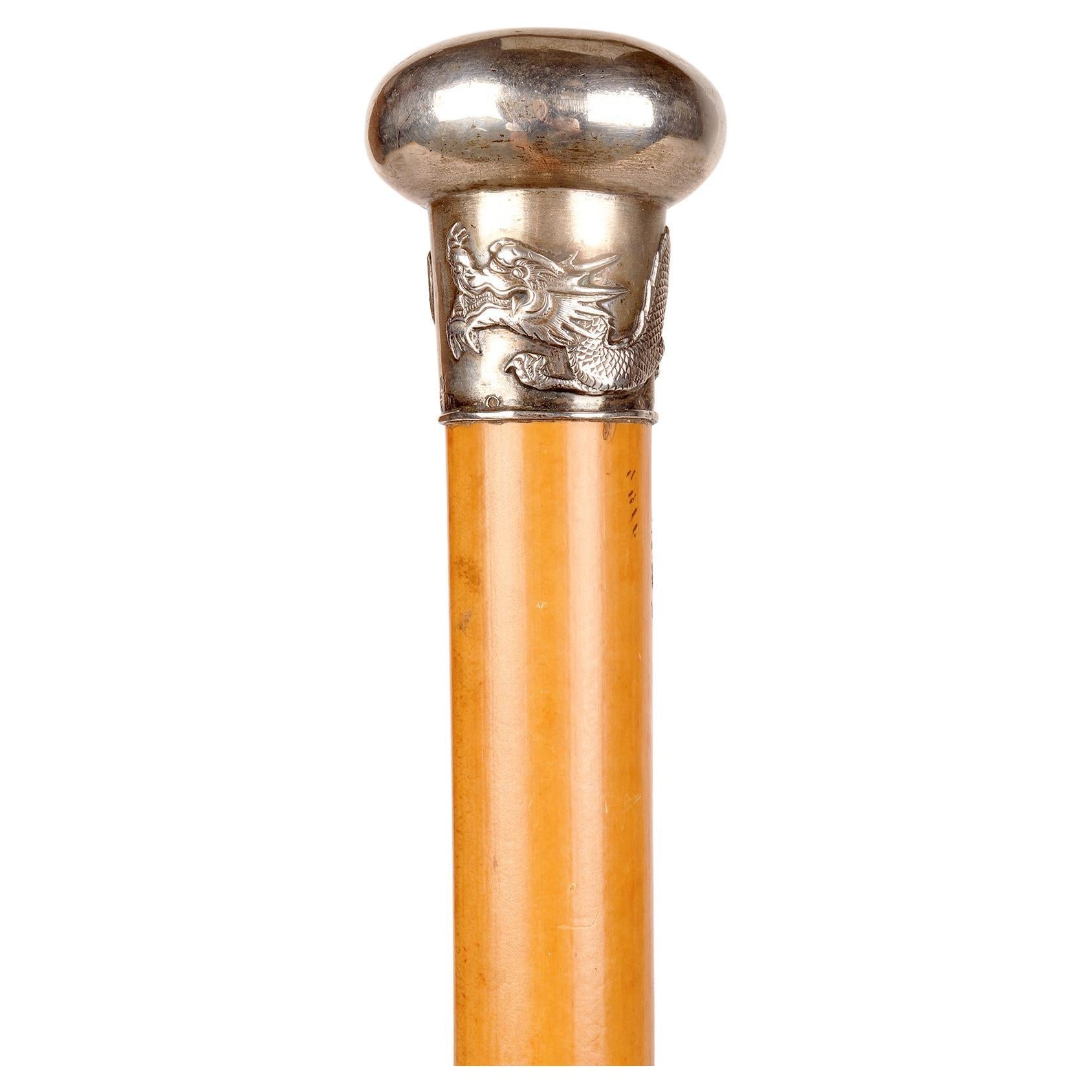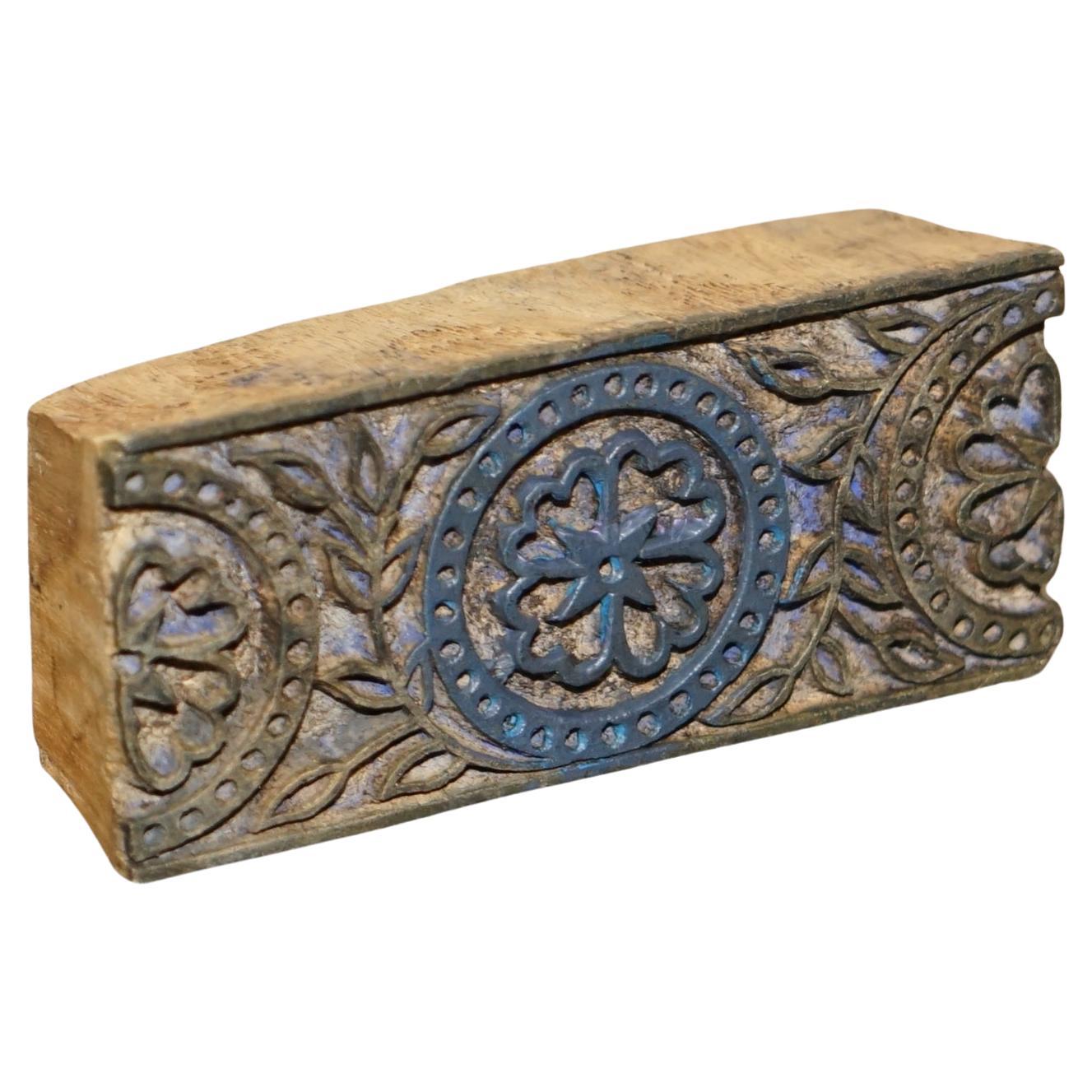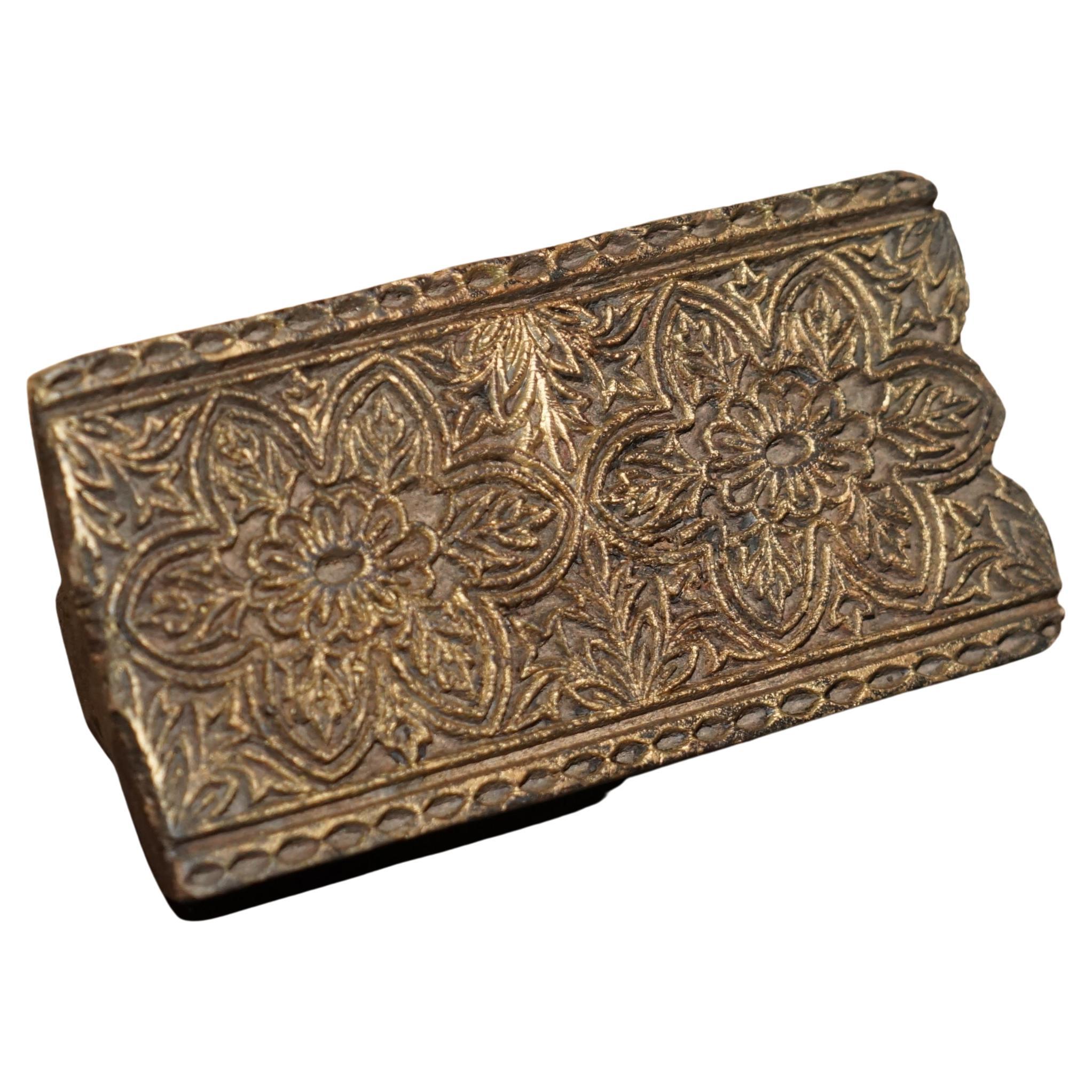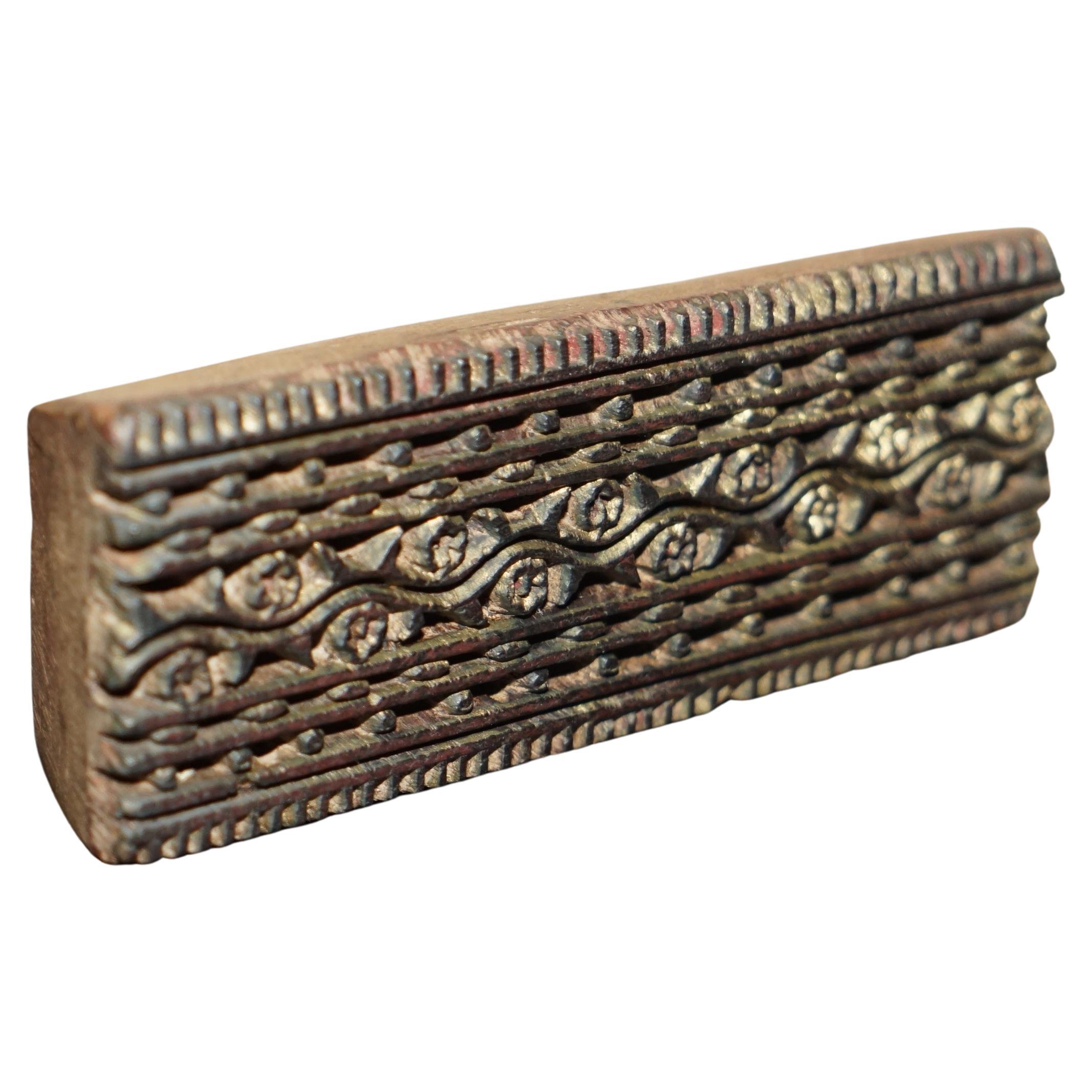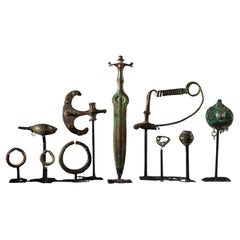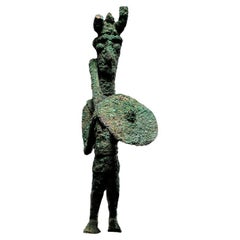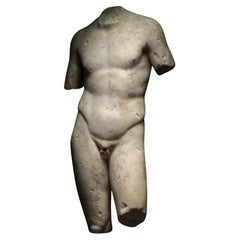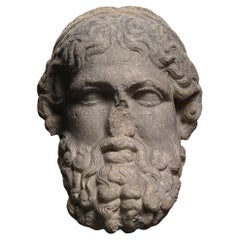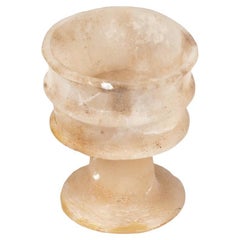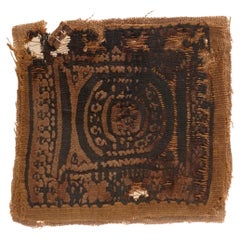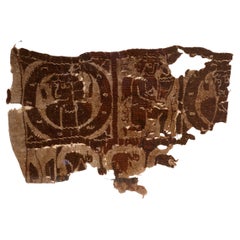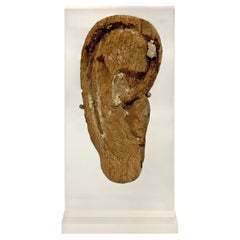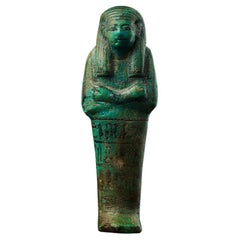
Ushabti for Imenmes
View Similar Items
Want more images or videos?
Request additional images or videos from the seller
1 of 8
Ushabti for Imenmes
$39,832.79List Price
About the Item
- Dimensions:Height: 5.44 in (13.8 cm)Width: 1.89 in (4.8 cm)Depth: 0.99 in (2.5 cm)
- Style:Egyptian (Of the Period)
- Materials and Techniques:
- Place of Origin:
- Period:
- Date of Manufacture:19th Dynasty, 1290-1279 B.C., New Kingdom
- Condition:Wear consistent with age and use.
- Seller Location:London, GB
- Reference Number:1stDibs: LU5517239280482
About the Seller
5.0
Vetted Professional Seller
Every seller passes strict standards for authenticity and reliability
Established in 1910
1stDibs seller since 2020
Authenticity Guarantee
In the unlikely event there’s an issue with an item’s authenticity, contact us within 1 year for a full refund. DetailsMoney-Back Guarantee
If your item is not as described, is damaged in transit, or does not arrive, contact us within 7 days for a full refund. Details24-Hour Cancellation
You have a 24-hour grace period in which to reconsider your purchase, with no questions asked.Vetted Professional Sellers
Our world-class sellers must adhere to strict standards for service and quality, maintaining the integrity of our listings.Price-Match Guarantee
If you find that a seller listed the same item for a lower price elsewhere, we’ll match it.Trusted Global Delivery
Our best-in-class carrier network provides specialized shipping options worldwide, including custom delivery.More From This Seller
View AllCorsican Bronze Hoard
Located in London, GB
Dagger L: 27.8 cm,
Luniform bronze, possibly a belt buckle L: 10.8 cm,
Shield-shaped bronze with a point Diam: 6.5 cm,
Pommel Diam: 3.7 cm,
Violin-bow brooch L: 17.5 cm,
P-Shape...
Category
Antique 15th Century and Earlier European Classical Roman Antiquities
Materials
Bronze
$87,794 / set
A Sardinian Figure of a Warrior
Located in London, GB
An exceptionally rare and important Sardinian bronze figure of a warrior. The highly stylized figure is depicted standing, holding a club resting on his shoulder in the right hand an...
Category
Antique 15th Century and Earlier Italian Antiquities
Materials
Bronze
$185,615
Torso of a Youth
Located in London, GB
A marble statue of a youth in contrapposto position. The torso is idealised but has only softly suggested muscles, giving the impression of youth. The beginnings of the slender arms ...
Category
Antique 15th Century and Earlier European Antiquities
Materials
Marble
$519,723
Marble Head of Hermes
Located in London, GB
Roman head of the god Hermes in an archaising style, following a Greek model from the fourth century B.C.. Hermes is depicted in manner typically found on herms, with a full beard of...
Category
Antique 15th Century and Earlier European Classical Roman Antiquities
Materials
Marble
$68,894
Edmontosaurus Skull
Located in London, GB
An impressive skull of an Edmontosaurus, a large herbivorous dinosaur that lived during the Late Cretaceous period, 68-66 million years ago. The three rows of sixty or more teeth on either side of the jaw, known as the ‘dental battery’, mark the Edmontosaurus as part of the Hadrosauridae, or duckbill family of dinosaurs. It belongs to the flat-skulled, or solid-crested, Hadrosaurinae, which replaced the older hollow-crested hadrosaurs. Edmontosaurus was one of the last non-avian dinosaurs to ever exist, living shortly before the Cretaceous-Paleogene extinction event.
The Edmontosaurus was named in 1917 by Lawrence Lambe, after a partial specimen from Edmonton in Alberta, Canada. The existence of large Edmontosaur bone beds...
Category
Antique 15th Century and Earlier American Natural Specimens
Materials
Bone
$121,937
Juvenile Triceratops Skull ‘Maple’
Located in London, GB
A skull of a juvenile Triceratops prorsus from the Maastrichtian, late Cretaceous period (68-65 million years ago).
The triceratops roamed the plains of what is now North America a...
Category
Antique 15th Century and Earlier North American Natural Specimens
Materials
Bone
You May Also Like
An Egyptian alabaster ribbed cup, New Kingdom, 18th dynasty
Located in UTRECHT, UT
The cup hand-carved from white alabaster with caramel and white veining throughout the composition. The cup stands upon a tapering base, and widens to form the ribbed, cylindrical cup.
Alabaster was a material prized by ancient sculptors...
Category
Antique 15th Century and Earlier Egyptian Egyptian Antiquities
Materials
Alabaster
Kapati textile - Epoque Byzantine; 4th–5th Century C.E
Located in Bruxelles, BE
Kapati Textile
Byzantine Period; 4th–5th Century C.E.
Materials: Plant and Animal Fibers, Wool
9,5 x 9,5 cm
This woolen fabric is woven in the traditional Coptic Kapati style, characteristic of Egypt during the Christian era. The name "Kapati" refers to the Copts of Egypt and describes a weaving technique that does not use embroidery or printing. It is said that Al-Muqawqis, the governor of Egypt, offered the Prophet garments made from Kapati fabric.
At the 1900 Exposition Universelle in Paris, the French archaeologist Albert Gayet showcased the results of his excavations from the winter of 1898-1899. Around one hundred Coptic textiles and fragments were displayed at the Palais du Costume. Their aesthetic generated considerable enthusiasm, particularly among artists like Auguste Rodin and Henri Matisse. This led to a "Coptomania," which, among other things, influenced fashion designers.
The square fragment features black decoration on a beige background; the two squares at the center are separated by scalloped edges, from which hang various ornaments or geometric motifs. At the center of the fragment is an image of a dancing figure surrounded by geometric decorations. This piece dates back to a time when ancient...
Category
Antique 15th Century and Earlier Egyptian Egyptian Antiquities
Materials
Wool, Natural Fiber
Coptic textile Byzantine Period; 4th–5th Century C.E.
Located in Bruxelles, BE
Coptic textile
Byzantine Period; 4th–5th Century C.E.
Materials: linen, Wool
23 x 16 cm
This fragment features black decorations on a beige background, depicting human figures with...
Category
Antique 15th Century and Earlier Egyptian Egyptian Antiquities
Materials
Wool, Linen
Late-Period to Ptolemaic Period Egyptian Wooden Mummy Mask Ear on Custom Mount
Located in Chicago, IL
This Late Period to Ptolemaic Period Egyptian carved wood ear, once part of a mummy mask, stands as a poignant testament to ancient Egyptian customs and beliefs. Dating back over 250...
Category
Antique 15th Century and Earlier Egyptian Egyptian Antiquities
Materials
Wood
System walking stick for entomologists, France 1890.
Located in Milan, IT
Gadget-System stick: stick with the function of entomologist. Rattan cane, ivory and brass knob. Inside a brass folding lens with ivory handle and pin, also with ivory handle. France...
Category
Antique Late 19th Century French Antiquities
Materials
Brass
Galvanometer Antique Measuring Instrument Used for Telegraph Cables 1850 circa
Located in Milan, IT
Vertical mirror galvanometer made in 1850 circa, oak and glass, three adjustable screws at the base. Tool constituted by a magnet bar movable inside a coil and connected to a needle. In the absence of current the needle is positioned vertically while when the coil is crossed by the current it creates a magnetic field that moves the needle. This type of galvanometer was used for measurement of insulation of telegraph cables...
Category
Antique 1850s British Scientific Instruments
Materials
Wood
